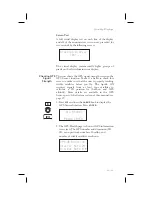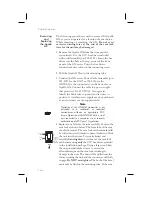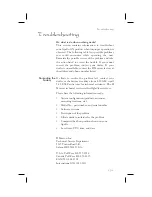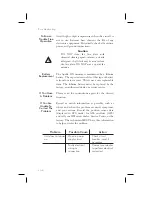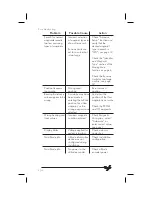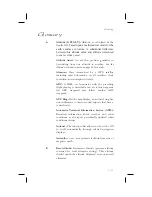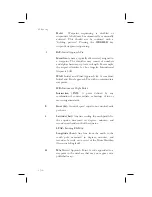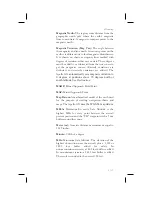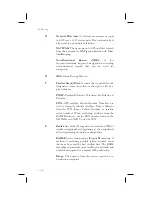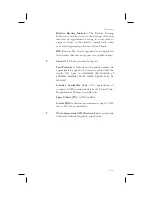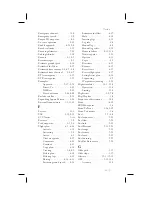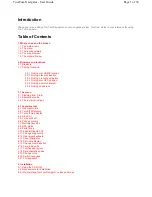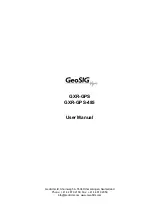
processes the information to determine which
satellites are “visible” to the receiver’s antenna. With
this determination made, the receiver chooses
satellites to calculate a position fix. Using information
transmitted from three or more satellites, the unit can
calculate latitude and longitude (usually abbreviated
Lat/Lon); with four or more satellites, GPS altitude
can also be calculated.
GPS System
Accuracy
The GPS allows a high degree of position fix
accuracy. The system can produce a position fix
accurate to within less than one meter under ideal
conditions. Due to concern for national security, the
U.S. Department of Defense introduces constantly
changing errors to the transmitted satellite data to
degrade the accuracy of the system. Called
Selective
Availability
, this practice limits GPS position fix
accuracy to about 100 meters, although the relative
position of the satellites to one another, their elevation
above the horizon, and other factors can also affect
accuracy
of
the
position
fix.
Under
optimal
conditions, accuracy can improve to within 10 meters.
GPS position fix accuracy is not affected by
atmospheric conditions.
GPS altitude is based on a mathematical model of the
shape of the earth, the WGS-84 ellipsoid. Including
intentional degradation, GPS altitude may differ from
barometric altitude by several hundred feet.
14-2
GPS Navigation
Summary of Contents for 50
Page 1: ......
Page 194: ...9 4 Approach Basics GX50 60 ...
Page 232: ...9 42 Approach Examples ...
Page 240: ...9 50 Approach Examples ...
Page 245: ...9 55 Approach Examples ...
Page 266: ...Notes 9 76 Approach Examples ...
Page 271: ...Charts have been reduced for illustrative purposes 9 81 Approach Notes ...
Page 275: ...Reduced for illustrative purposes 9 85 Approach Notes ...
Page 276: ...Charts have been reduced for illustrative purposes 9 86 Approach Notes ...
Page 314: ...Notes 15 12 Glossary ...
Page 323: ......




